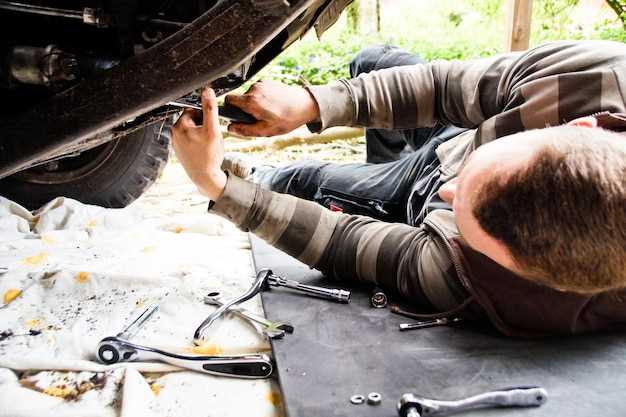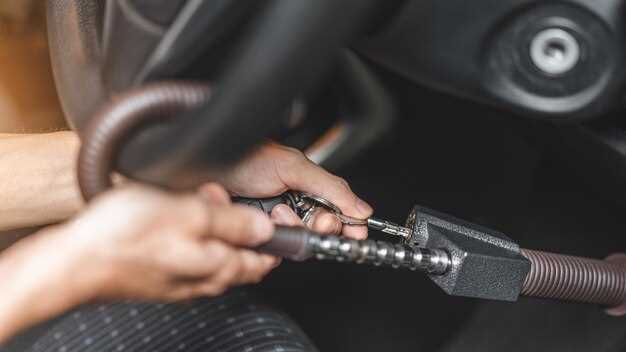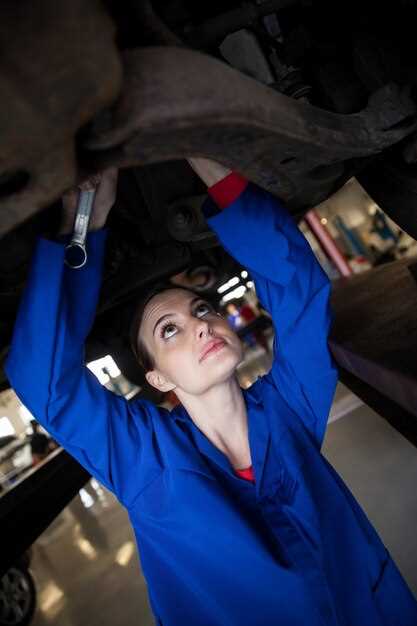Fixing Fiat Gearbox Problems at Home

Owning a Fiat means experiencing the joys of Italian engineering, but like any vehicle, it can encounter its fair share of issues, particularly with the gearbox. Understanding how to troubleshoot and repair these problems at home can save you both time and money. With the right tips and a bit of patience, tackling Fiat gearbox issues can become a manageable task.
Fiat owners often report common gearbox problems, from shifting issues to unusual noises. Recognizing these symptoms early on is crucial for effective repair. This article will guide you through the most frequent gearbox-related challenges Fiat drivers face, enabling you to diagnose and fix these issues without the need for professional assistance.
Equipped with tips on tools and techniques, you’ll learn to approach repairs methodically. Whether it’s checking fluid levels, examining gear linkages, or identifying worn components, the following sections will provide you with practical advice and step-by-step instructions. By the end of this guide, you’ll have the confidence to address your Fiat’s gearbox problems, ensuring a smoother driving experience.
Identifying Common Fiat Gearbox Problems

Understanding the common issues that can arise with Fiat gearboxes is essential for effective repair. Many owners encounter various problems that can affect performance and safety. Here are some typical gearbox problems to look out for:
1. Difficulty Shifting Gears
One of the most frequently reported issues is difficulty in shifting gears. This can stem from low gearbox fluid levels or worn clutch components. If you find it hard to engage a certain gear, check the fluid and consult a professional if needed.
2. Gear Slippage
If your vehicle abruptly slips out of gear while driving, it may indicate a serious problem within the gearbox. Slippage can often be caused by worn gears or an insufficient amount of transmission fluid. Regular maintenance is crucial in preventing such issues.
3. Unusual Noises
Grinding, whining, or clunking noises during gear changes can indicate internal damage or worn components. Pay attention to the sounds; they can provide essential clues about the state of your gearbox. Early detection can lead to simpler repairs.
4. Fluid Leaks
Any visible leaks beneath the vehicle can suggest a problem with the gearbox seals. Fluid leaks should be addressed promptly to avoid further damage. Ensure to regularly inspect the area under your Fiat for any signs of leakage.
5. Warning Lights
If your dashboard shows a warning light related to the gearbox, it’s a sign that something requires immediate attention. Do not ignore these indicators; they often signal underlying issues that could lead to significant damage if left unchecked.
By being aware of these common gearbox problems, Fiat owners can take proactive steps in maintaining their vehicles. Incorporating these tips for regular checks can save time and money in the long run, ensuring a smoother driving experience.
Step-by-Step Guide to DIY Fiat Gearbox Repairs

Repairing a Fiat gearbox at home can be a manageable task if you follow the right steps. Below is a detailed guide to help you through the process, ensuring that you can tackle common issues effectively.
Step 1: Gather Tools and Materials
Before starting, collect all necessary tools, including wrenches, screwdrivers, a torque wrench, and a gearbox oil pump. Ensure you have replacement parts specific to your Fiat model, such as seals or bearings, ready for installation.
Step 2: Drain the Gearbox Oil
Begin by safely lifting your Fiat using jack stands. Locate the gearbox drain plug and use a wrench to remove it. Allow the old oil to fully drain into a suitable container. This step is crucial as it prevents contamination during repairs.
Step 3: Remove the Gearbox
Disconnect any electrical connectors or linkages attached to the gearbox. Next, remove the mounting bolts and carefully slide the gearbox out from the engine housing. Be cautious of the weight and position to avoid injury.
Step 4: Inspect and Diagnose
Once you have access to the gearbox, inspect for wear and damage. Look for metal shavings, cracks in the casing, or worn gears. Identifying the specific issue will guide your repair decisions. Use a camera or notebook to document any findings.
Step 5: Perform Necessary Repairs
Depending on the diagnosis, there may be several repairs to make. Replace damaged gears, seals, or bearings as needed. Follow manufacturer specifications for torque settings when installing new components to ensure proper fitment.
Step 6: Reassemble the Gearbox
After making repairs, carefully reassemble the gearbox. Ensure all parts are securely fitted and any retaining clips are in place. Double-check that all components are aligned and functioning smoothly before proceeding.
Step 7: Reinstall the Gearbox
Lift the gearbox back into place, ensuring it aligns with the engine. Reattach the mounting bolts, making certain they are tightened to the correct specifications. Reconnect all electrical and linkage components that were previously detached.
Step 8: Fill with New Gearbox Oil
Using the gearbox oil pump, refill the gearbox with new oil. Refer to your Fiat’s manual for the correct type and volume of oil required. This step is vital for ensuring smooth operation and longevity of the gearbox.
Step 9: Test Drive
Lower your Fiat after ensuring everything is secure. Start the engine and take a short test drive to listen for any unusual noises and to check shifting performance. If everything operates smoothly, your repair is complete.
Tips: Always refer to the Fiat service manual for model-specific guidance. Regular maintenance and inspections can help prevent future issues from occurring, making repairs less frequent and extensive.
When to Seek Professional Help for Fiat Gearbox Issues
Determining the right moment to consult a professional mechanic for Fiat gearbox issues can save you time, money, and stress. While some problems can be addressed at home using basic repairs and tips, certain symptoms indicate that expert intervention is necessary.
If you notice unusual noises such as grinding, clunking, or whining coming from the gearbox, it is a sign that something may be seriously wrong. These sounds often indicate wear or damage that could lead to more significant failures if left untreated. In such cases, consulting a professional for diagnosis and repair is advisable.
Additionally, if your Fiat’s gearbox refuses to engage or experiences unexpected slip-outs, this could signal a critical issue with the transmission system. Delaying repairs on these symptoms can lead to complete breakdowns, resulting in extensive repair costs. Therefore, it is vital to seek professional help immediately when facing these concerns.
Another scenario where professional assistance should be prioritized is if you observe fluid leaks under your vehicle. Transmission fluid is essential for proper gearbox operation, and any leakage can lead to inadequate lubrication, causing severe damage. An experienced mechanic can identify the source of the leak and perform the necessary repairs to prevent further complications.
Finally, having difficulty with gear shifts, whether it’s stiffness or hesitance, can indicate a more complex issue that may not be resolved through basic troubleshooting. Engaging a professional can ensure a thorough inspection and comprehensive repair strategy that addresses the root cause.
In summary, while minor Fiat gearbox issues can often be managed through DIY repairs and tips, major symptoms warrant professional evaluation. Paying attention to the performance of your vehicle and seeking timely assistance can significantly enhance its longevity and operational efficiency.



